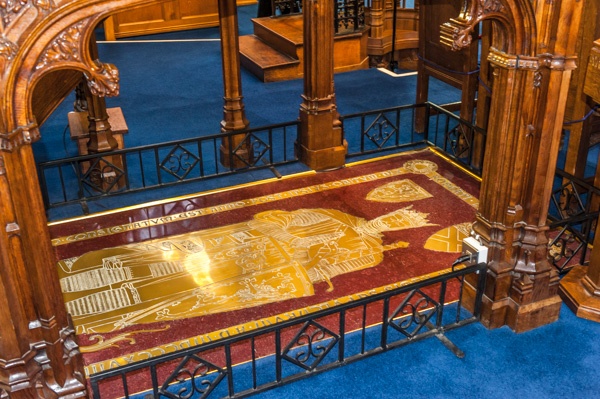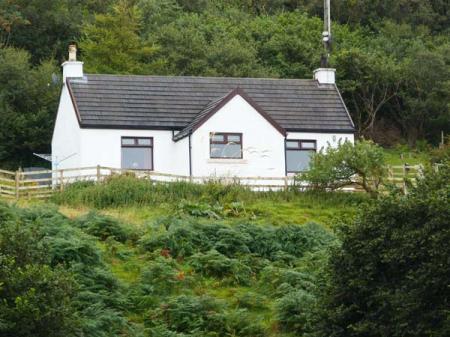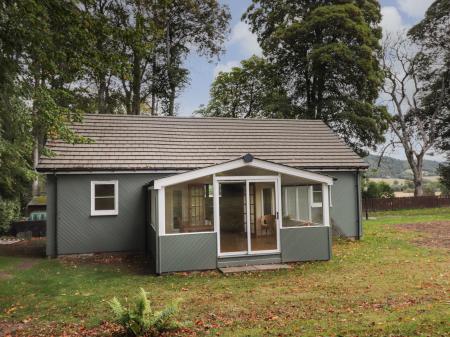
The name Robert Bruce is forever associated with Scotland's fight for independence from England. But there were really two Robert Bruces; grandfather and grandson, and both, in their time, claimed the throne. The elder Bruce was John Balliol's rival for the Scottish crown after the death of Margaret, Maid of Norway. When Edward I of England was asked to choose between the two claimants, he chose Balliol. The elder Bruce eventually resigned his claim in favour of his son, whose rights passed in turn to his own son, also named Robert. It was left to the youngest Bruce to see his grandfather's claim through to the end.
When William Wallace raised his army of commoners against English rule, Robert Bruce saw his chance. He joined Wallace and fought with him in his famous victory at Stirling Bridge. But Wallace was eventually betrayed to the English and put to death.

In 1306 Bruce made a fresh attempt to press his claim to the Scottish throne. He called a meeting with his main rival, John Comyn, ostensibly to iron out their differences. The meeting took place in the church at Dumfries on 10 February 1306.
Historians argue whether Bruce planned what happened next, but there seems little doubt that he was prepared for the meeting to go awry. An argument broke out between the two groups of supporters, and Comyn was stabbed and killed, possibly by Bruce himself. Whether he had planned the murder or not, the fact that Comyn was dead left the way clear for Bruce to press his claim to the throne.
He wasted no time; on 25 March 1306, Bruce had himself crowned King of Scotland at Scone. Predictably, Edward I of England was furious. He vowed to capture Bruce and execute him as he had done to Wallace before him. He sent an army under the Earl of Pembroke to defeat Bruce but Pembroke was unable to capture his enemy. Edward then imprisoned Bruce's wife, his daughter Marjory, and two sisters. He ordered Bruce's three brothers executed, and had one of his major supporters, the Countess of Buchan, held in a cage at Berwick Castle.
Edward then raised a fresh army and marched north. But the 'Hammer of Scots' was old and in poor health. He died before reaching Scotland. The new king, Edward II, called the army back and left Scotland alone, perhaps considering that the English control of major Scottish castles would counter any threat Bruce might pose.
Bruce did not at first even concern himself with the English; he moved against his Scottish rivals, the Comyns and the Balliols. He captured and killed his rivals and their supporters, took their cattle and destroyed their crops. This 'razed earth' type of policy was called 'hercship'. Once Bruce had dealt with his rivals he turned his attention to the English. One by one he took English-held strongholds, relying on trickery rather than direct sieges. Between 1308 and 1314 Bruce recaptured the main English castles and raided English supply lines.
Robert Bruce did not fancy a direct battle with the English, but his hand was forced when his brother, Sir Edward Bruce, made a bargain with the English commander of Stirling that the garrison would surrender if they were not rescued by Edward II before Midsummer's Day, 1314. Edward II now had no choice but to raise an army and march north to Stirling. Bruce gathered his forces and waited.
Bannockburn
The two armies met on 23 June 1314 at Bannockburn, just outside Stirling. Bruce was outnumbered, like Wallace at the first Battle of Stirling Bridge, but like Wallace, he used his knowledge of the terrain and superior tactics. In a battle lasting two days, Bruce forced the English cavalry into marshy ground where they were trapped. The Scottish victory at Bannockburn was the final nail in the English coffin. Though Edward blustered, the Bruce ruled supreme north of the border.
Bruce instituted parliamentary reform, inviting representatives of the royal burghs to join the nobility and church in governing the country. He initiated a system of taxation to help administer the country, and got leading nobles and burgesses to swear an oath of loyalty to his son, David. He built a navy to counter the threat of English pirates. In short, he moved to repair the damage caused by the long wars of independence and created a system of government that would last long after he was gone.


